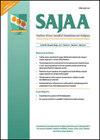Anaesthetic nurse training in KwaZulu-Natal government hospitals: exploring strengths and deficiencies
IF 0.3
Q4 ANESTHESIOLOGY
Southern African Journal of Anaesthesia and Analgesia
Pub Date : 2021-02-24
DOI:10.36303/SAJAA.2021.27.1.2481
引用次数: 1
Abstract
Background: The anaesthetic nurse is a key assistant to the anaesthetist and integral to the provision of safe anaesthesia. Inadequate undergraduate training in South Africa necessitates anaesthetic nurses to acquire the requisite skills and knowledge in the workplace. Few studies explore the challenges faced by practising nurses to acquire such skills. This study sought to explore the experiences of working anaesthetic nurses to gain their perspectives on workplace-based learning, skills acquisition and how to improve anaesthetic nurse training. Methods: We used qualitative methodology comprising an English-medium, self-administered, anonymous questionnaire. A purposive sampling method was used, and 73 anaesthetic nurses working in five government hospitals in eThekwini, KwaZulu-Natal were recruited. Questionnaires were thematically analysed, and simple statistical analysis was used for quantitative data. Results: Most anaesthetic nurses received little or no undergraduate anaesthesia training and participants identified subsequent workplace-based training as inconsistent, and insufficient. Despite most participants’ arbitrary allocation to the position of anaesthetic nurse, the majority found their work stimulating and identified themselves as team-players, adaptable, and willing to learn. Further training and hands-on skills acquisition were keenly sought. Factors impacting positively on their learning and job satisfaction included a confident anaesthetist who was willing to teach and collaborate on learning, provide positive feedback, and include the anaesthetic nurse in case planning. Participants identified crucial areas for further development. In theatre teaching and practical group tutorials led by anaesthetists were suggested as preferred training modalities. Responses to hypothetical case scenarios demonstrated qualities in the participants that are valued in the anaesthetists’ non-technical skills framework. Conclusion: It is evident that there is insufficient formal training and inconsistent training methods of the current anaesthetic nurses in the five study hospitals. The workplace-based learning experiences of our study participants has given us a unique perspective from practising anaesthetic nurses and may be used to inform the formulation of appropriate training curricula and improve the learning partnership with anaesthetists. This should ultimately improve anaesthetic nurse job satisfaction and the theatre team experience.夸祖鲁-纳塔尔省政府医院麻醉护士培训:探索优势和不足
背景:麻醉护士是麻醉师的重要助手,也是提供安全麻醉不可或缺的一部分。南非本科培训不足,麻醉护士必须在工作场所获得必要的技能和知识。很少有研究探讨执业护士在获得此类技能方面所面临的挑战。本研究试图探索麻醉护士的工作经验,以获得他们对基于工作场所的学习、技能获取以及如何改进麻醉护士培训的看法。方法:我们采用了定性方法,包括英语媒介,自填,匿名问卷。采用了有目的的抽样方法,招募了73名麻醉护士,他们在夸祖鲁-纳塔尔省eThekwini的五家政府医院工作。对问卷进行了主题分析,并对定量数据进行了简单的统计分析。结果:大多数麻醉护士很少或根本没有接受过本科麻醉培训,参与者认为随后的工作场所培训不一致,而且不够充分。尽管大多数参与者被随意分配到麻醉护士的职位上,但大多数人发现自己的工作很有刺激性,并认为自己是团队成员,适应性强,愿意学习。迫切需要进一步的培训和实践技能的获取。对他们的学习和工作满意度产生积极影响的因素包括一位自信的麻醉师,他愿意教授和合作学习,提供积极的反馈,并将麻醉护士纳入病例规划。与会者确定了需要进一步发展的关键领域。建议将由麻醉师领导的剧场教学和实践小组辅导作为首选培训模式。对假设病例场景的反应表明了参与者的素质,这些素质在麻醉师的非技术技能框架中受到重视。结论:五家研究医院现有麻醉护士的正规培训不足,培训方法不一致。我们的研究参与者基于工作场所的学习经历为我们提供了一个从执业麻醉护士的独特视角,并可用于制定适当的培训课程和改善与麻醉师的学习伙伴关系。这将最终提高麻醉护士的工作满意度和手术室团队的经验。
本文章由计算机程序翻译,如有差异,请以英文原文为准。
求助全文
约1分钟内获得全文
求助全文
来源期刊

Southern African Journal of Anaesthesia and Analgesia
ANESTHESIOLOGY-
CiteScore
0.90
自引率
0.00%
发文量
10
 求助内容:
求助内容: 应助结果提醒方式:
应助结果提醒方式:


